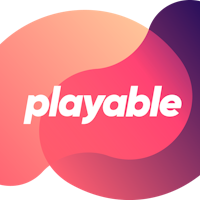Playable
Playable is a SaaS platform for marketers who want to create a clear value exchange in order to create game-changing possibilities for their brand.
Skills
Clients
Sector Experience
This promoted content is produced by a publishing partner of Open Mic. A paid-for membership product for partners of The Drum to self-publish their news, opinions and insights on thedrum.com - Find out more
How playable experiences improve customer engagement and retention
August 3, 2022

Ensuring a slick, friction-free customer journey -- where the customer-to-be arrives at the intended destination 0 (the point of purchase) without distraction -- means offering an experience that consumers will remember. And that means they’ll likely be back for more. Not only are you attracting customers, but you are retaining them long-term too.
But while that’s the ideal, the reality can be somewhat different. Customer journeys can be bumpy, with obstacles along the way, and it’s easy for the consumer to get lost.
And if that happens you could end up losing the consumer forever.
Businesses must consider how their consumers are interacting with them at any point on the customer journey and how to optimize the interactions that are taking place to ensure they stay with them.
Advertisement
It’s here that playable experiences can help to drive the customer journey, by enabling brands to attract and acquire consumers, target and grow them, and ultimately create a winning retention strategy.
How to use playable experiences throughout the customer journey
The customer journey is made up of the three key points of interest we mentioned previously – attracting and acquiring consumers, targeting and growing, and retention. We believe the very act of playing has advantages in each of those three steps.
- How to attract new customers
In this stage the focus is attracting the attention of potential new customers to your brand. Enabling that in new and surprising ways is critical. The market is often crowded, and potential customers can be bombarded with marketing noise. Brands need to be able to stand out from the crowd.
The B2B sales organization, Würth Denmark, has done this through always-on pop-up campaigns incorporating playable experiences that sparks consumer interest, as well as targeted shorter campaigns, often related to products. It has also added the incentive of product samples to its strategy, winning 800 email signups in one such game.
- How to target customers
The targeting and growing stage requires building closer, deeper relationships with the consumer. It can involve using the data already collected about the consumer to target them more succinctly, building loyalty as a result. It can also enable you to attract similar customers.
UK-based Costcutter Supermarket Group has used a variety of tactics to do this, such as using game mechanics to engage consumers online, as well as driving them instore to build relationships in person through onsite store locator buttons. Integrating recipe ideas and product recommendations in their game campaigns also helps to grow spend.
- How to retain customers
Ultimately a customer journey needs to encompass how to keep consumers long-term. This provides valuable additional sales but also means that they potentially become ambassadors for the brand.
It’s here that a winning retention strategy comes into play. At European sneaker marketplace Klekt, the company used a spin the wheel luck game to tempt customers back with the chance to win a discount code for their next purchase. Another campaign was a Christmas-themed quiz that included prizes such as website credits, again enticing repeat customers. That campaign delivered more than 11,000 customer registrations, more than half (54%) of whom were still engaged with the brand a year later.
Playable experiences' role in engagement
So playable experiences are an effective tool to use in all steps that make up the customer journey. But understanding why it works so well is key to maximizing its opportunity.
The heart of its success comes in the value exchange it offers. For consumers to engage and share their details and time with a brand there has to be something in it for them. And that’s what playable experiences offer. They give customers something back before it asks anything of them.
It rewards consumers with a fun and engaging experience that they love. And the result is that consumers open up – sharing data and permissions as a result.
Crucially how much they open up can also be surprising. We’ve run two studies recently, the first looking at how consumers say they react to marketing that has been enhanced with playable experiences, and the second at how their behavior translates in practice.
The results showed that in reality consumers share more than they think when engaging in playable experiences. For instance, when it comes to sensitive data our data showed that 36% of consumers said they would share a zip code with a brand that offered playable marketing while 55% did so in practice.
It seems that in the case of playable experiences the more you give, the more you get back. And you stand more chance of delivering that seamless customer journey we mentioned at the beginning. Is your business heading in that direction?
Find out more about how to deliver a great journey for your customers by downloading our e-guide Using Marketing Gamification to Navigate the Customer Journey.


